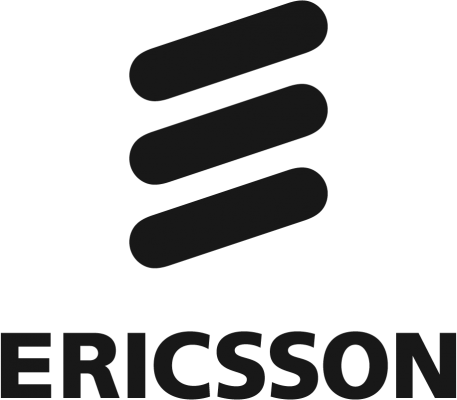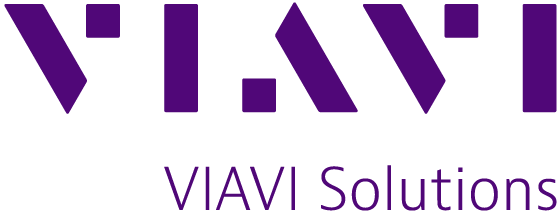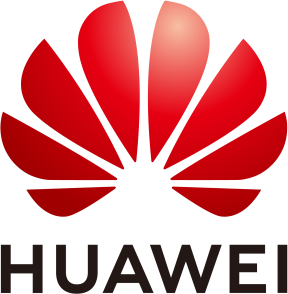The 2024 IEEE ICC continues to provide an extensive platform for researchers and industry professionals, featuring exceptional keynote speakers set to inspire with their profound insights and expertise.
List of Keynotes
DR. SAMEH M. YAMANY
TITLE: TELECOM DIGITAL TWINS AND THEIR ROLE IN FUTURE TECHNOLOGIES MATURITY
Abstract: The contemporary digital landscape hinges profoundly upon the telecommunications industry, serving as the bedrock that facilitates adaptation and expansion to meet evolving consumer demands and business prerequisites. This evolution is giving rise to a realm of intricate, high-demand, and ultra-low-latency applications, spanning from the realms of smart cities and autonomous driving to Industrial IoT and remote surgery.
Amidst this dynamic and ever-evolving landscape, the concept of Telco Digital Twins emerges as a transformative force, endowing us with novel predictive capabilities aimed at optimizing and enhancing telecommunications networks and services. In this presentation, we will elucidate the workings of Telco Digital Twins, which create virtual software replicas of networks, empowering operators to swiftly and efficiently manage future network behaviors and disruptions.
In this talk we will explore how these digital twins play a pivotal role in propelling the evolution of next-generation network design, reliability, and performance. They stand as indispensable tools, adept at pre-emptively identifying network anomalies before they manifest, while also adeptly emulating the intricate traffic patterns and behaviors characteristic of complex 5G, Open RAN, or the much-anticipated 6G networks.
Biography:
 Dr. Sameh Yamany serves as the Corporate Chief Technology Officer at VIAVI Solutions, entrusted with steering the company’s technological vision and strategic directions. His professional journey encompasses a distinguished role as the Chief Executive Officer and President of Trendium, a cutting-edge company specializing in customer experience assurance, which merged with VIAVI in 2013. Before this, Dr. Yamany excelled in a senior executive capacity at Tektronix Communications, overseeing the development of the Iris suite for comprehensive wireless and wireline monitoring solutions. In the academic arena, he has held the position of Assistant Professor at Old Dominion University, Virginia. Dr. Yamany obtained his Ph.D. in Computer Science from the University of Louisville, USA. He is an esteemed author of various patents, scholarly articles, and book chapters, with his expertise spanning
Dr. Sameh Yamany serves as the Corporate Chief Technology Officer at VIAVI Solutions, entrusted with steering the company’s technological vision and strategic directions. His professional journey encompasses a distinguished role as the Chief Executive Officer and President of Trendium, a cutting-edge company specializing in customer experience assurance, which merged with VIAVI in 2013. Before this, Dr. Yamany excelled in a senior executive capacity at Tektronix Communications, overseeing the development of the Iris suite for comprehensive wireless and wireline monitoring solutions. In the academic arena, he has held the position of Assistant Professor at Old Dominion University, Virginia. Dr. Yamany obtained his Ph.D. in Computer Science from the University of Louisville, USA. He is an esteemed author of various patents, scholarly articles, and book chapters, with his expertise spanning
DR. PEIYING ZHU, SVP HUAWEI RESEARCH
TITLE: CCMWAVE: A KEY ENABLER FOR 6G
Abstract: ITU has approved “Framework and overall objectives of the future development of IMT for 2030 and beyond” in World Radio Conference 2023 (WRC-23). At time same time, cmWave has been identified as one of the new candidate spectrums for International Mobile Telecommunications (IMT). These are two important milestones toward 6G research and development.
cmWave spectrum will be a key enabler to bring 6G vision into reality. Massive MIMO has been extensively deployed in 5G and will be further evolved for 5G-A. With the knowledge and experience learned in 5G, it is envisioned that ultra-massive MIMO technology will be the key technology to bring multi-fold capacity and spectrum efficiency gain to support immersive communication. With the large antenna array size and wide bandwidth, integrated sensing and communication in cmWave band will offer new exciting services.
In this talk, we will present the opportunities, challenges and enabling technologies to utilize cmWave spectrum, including simulation and test results.
Biography:
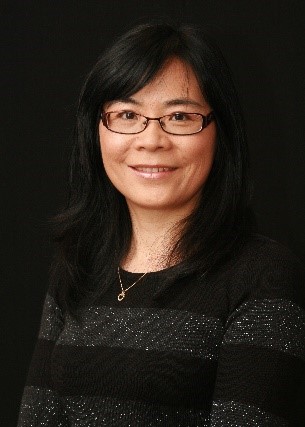 Dr. Peiying Zhu, Senior Vice President of Wireless Research, is a Huawei Fellow, IEEE Fellow and Fellow of Canadian Academy of Engineering. She is currently leading 6G wireless research and standardization in Huawei. The focus of her research is advanced radio access technologies. She is actively involved in 3GPP and IEEE 802 standards development. She has been regularly giving talks and panel discussions on 5G/6G vision and enabling technologies. She led the team to contribute significantly to 5G technologies and standardization. Many technologies developed by the team have been adopted into 5G standards and implemented in 5G products. She served as the guest editor for IEEE Signal processing magazine special issue on the 5G revolution and IEEE JSAC on Deployment Issues and Performance Challenges for 5G.
Dr. Peiying Zhu, Senior Vice President of Wireless Research, is a Huawei Fellow, IEEE Fellow and Fellow of Canadian Academy of Engineering. She is currently leading 6G wireless research and standardization in Huawei. The focus of her research is advanced radio access technologies. She is actively involved in 3GPP and IEEE 802 standards development. She has been regularly giving talks and panel discussions on 5G/6G vision and enabling technologies. She led the team to contribute significantly to 5G technologies and standardization. Many technologies developed by the team have been adopted into 5G standards and implemented in 5G products. She served as the guest editor for IEEE Signal processing magazine special issue on the 5G revolution and IEEE JSAC on Deployment Issues and Performance Challenges for 5G.
Prior to joining Huawei in 2009, Peiying was a Nortel Fellow and Director of Advanced Wireless Access Technology in the Nortel Wireless Technology Lab. She led the team and pioneered research and prototyping on MIMO-OFDM and Multi-hop relay, which were adopted into LTE standards and 4G products. Dr. Zhu has more than 200 granted patents.
DR. MAGNUS FRODIGH, VICE PRESIDENT AND HEAD OF ERICSSON RESEARCH
TITLE: 6G Cyber-Physical Continuum: Unleashing Industry Digitalization
Abstract: Over the coming years societies and businesses will go through major transformations such as electrification, green revolution, and efficiency through automation. High performance networks in an open architecture with open interfaces and open APIs are the foundation for digitalization and change. This keynote will explore the profound implications of 6G for industry digitalization, focusing on how 6G can nurture a dynamic and responsive ecosystem attracting application developers and enterprises.
Our vision for 6G is built on the desire to create a cyber-physical continuum where the digital and physical worlds as we know them today have merged, enabled by highly dynamic and performant networks. 6G will make it possible to move freely in the cyber-physical continuum, between the connected physical world of senses, actions and experiences, and its programmable digital representation. We will delve into example enablers and implications of this vision, such as increased demands on trustworthiness, pervasive AI, availability of good spectrum, network integrated compute, and how to enable limitless connectivity for all type of applications.
We realize that our 6G vision will not fully materialize over one day, but instead we will see an evolution from more basic first deployments of 6G around 2030. Standardization with requirements setting is already starting now in 2024. We will discuss key architectural foundations that need to be settled for the initial phase of 6G, while also stressing the need for research toward further 6G technology evolution and advancing ecosystems.
Biography:
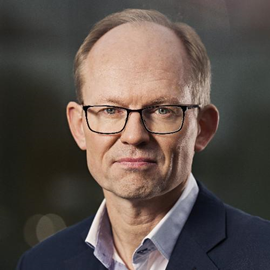 Dr. Magnus Frodigh is Vice President and Head of Ericsson Research. In this role he leads Ericsson’s long-term technology research organization, its close collaboration with academia and industry, and its contributions to the Ericsson business and product development. He holds a Master of Science degree from Linköping University of Technology, Sweden, and a Ph.D. in Radio Communication Systems from the Royal Institute of Technology, where he is also adjunct Professor in Wireless Infrastructures. He is a Fellow of the Royal Swedish Academy of Engineering Sciences (IVA) Frodigh joined Ericsson in 1994 and has over the past three decades held various key senior positions within Research & Development and Product Management, throughout the generations of mobile technology, from 2G all the way to current research on 6G technologies. He holds 29 patents.
Dr. Magnus Frodigh is Vice President and Head of Ericsson Research. In this role he leads Ericsson’s long-term technology research organization, its close collaboration with academia and industry, and its contributions to the Ericsson business and product development. He holds a Master of Science degree from Linköping University of Technology, Sweden, and a Ph.D. in Radio Communication Systems from the Royal Institute of Technology, where he is also adjunct Professor in Wireless Infrastructures. He is a Fellow of the Royal Swedish Academy of Engineering Sciences (IVA) Frodigh joined Ericsson in 1994 and has over the past three decades held various key senior positions within Research & Development and Product Management, throughout the generations of mobile technology, from 2G all the way to current research on 6G technologies. He holds 29 patents.
TINGFANG JI, VICE PRESIDENT OF ENGINEERING IN WIRELESS R&D, QUALCOMM
TITLE: ON THE PATH TO 6G: EFFICIENCY AND BEYOND COMMUNICATIONS
Abstract: The advent of 6G technology promises to bridge the gap between the present and the future, addressing the needs that will arise between 2030 and 2040. Unlike its predecessor, 5G, which was conceived nearly a decade ago, 6G aims to transcend mere communication enhancements. While 5G has made revolutionary breakthroughs in communications KPIs such as capacity, data rates, low latency, mobility, coverage, and connection density, 6G will grapple with challenges beyond traditional communication paradigms. It must accommodate system resiliency, integrated sensing, pervasive intelligence everywhere, and sustainability/efficiency.
In this talk, we categorize foundational 6G technologies into two distinct groups: enablers for new emerging services and enablers for cost/energy efficient systems. In the first group of enablers of new services, we will discuss AI native systems, sensing and digital twin, ambient IOT, and new core networks. In the second group of technologies for efficiency, we will dive deeper into network sharing, Subband full-duplex, Giga-MIMO for upper mid-band, energy efficiency, and 5G to 6G migration technologies. We conclude by showcasing recent Qualcomm explorations in critical areas of 6G wireless technologies.
Biography:
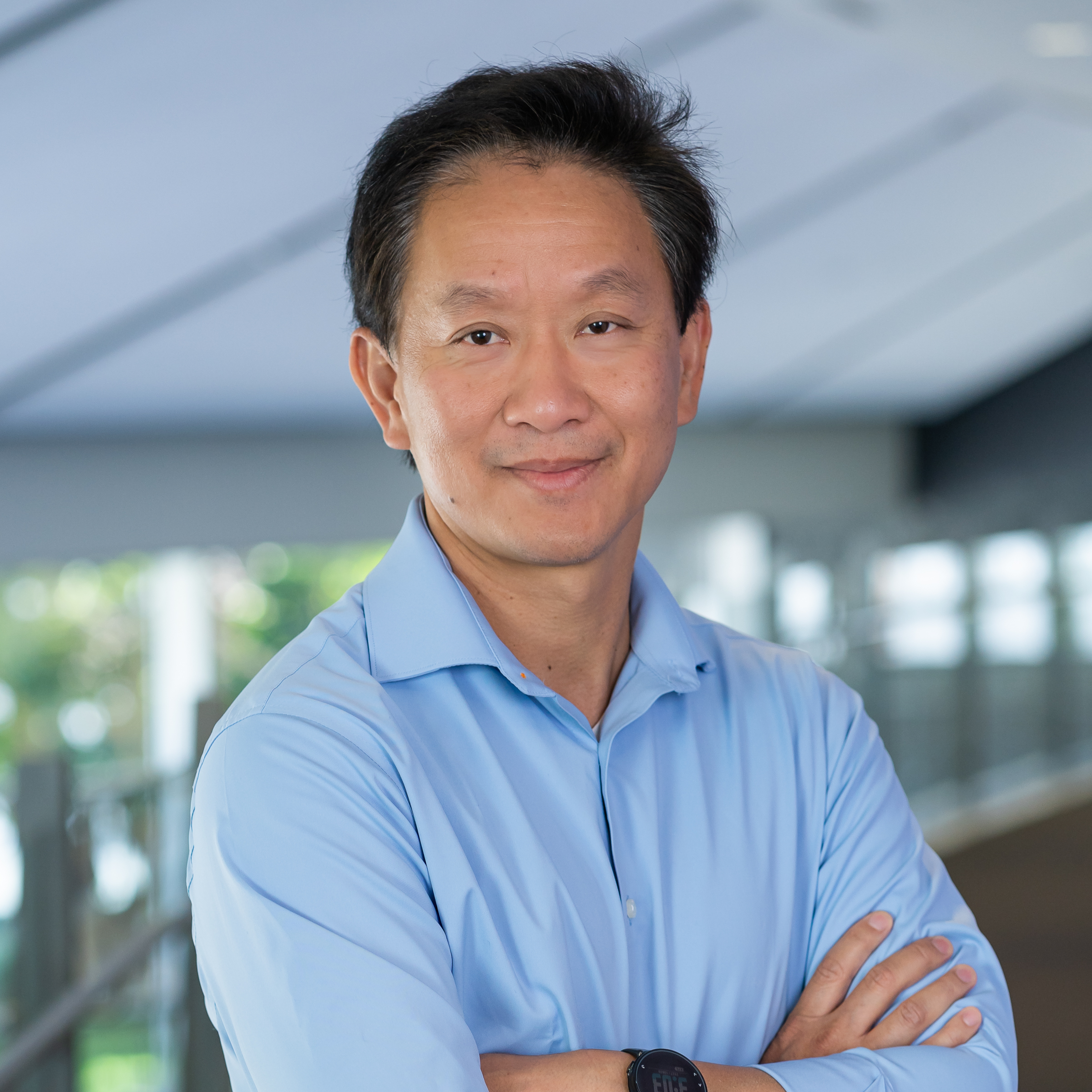 Tingfang Ji joined Qualcomm in 2003 and is currently a Vice President of engineering in Wireless R&D. From 2003 to 2014, he made instrumental technical contributions toward the development of LTE and LTE-Advanced technology and served as a vice chairman of the radio working group (RAN4) of 3GPP. Since 2014 he has been responsible for the flagship Qualcomm 5G/6G research project, driving Qualcomm's 5G NR air interface design/standardization efforts, sub6 GHz multi-vendor pre-commercial 5G NR IODT/trials, experimental macro network developments, and pre-6G research. Since 2022, Tingfang has been chairing the technology working group of NextG Alliance to promote North American 6G technologies. Before joining Qualcomm, Tingfang was a member of the technical staff at Bell Labs. As an inventor, he has more than 600 granted US patents. Tingfang received his Ph.D. in E.E. from the University of Michigan, Ann Arbor, in 2001 and a B.Sc. from Tsinghua University, Beijing.
Tingfang Ji joined Qualcomm in 2003 and is currently a Vice President of engineering in Wireless R&D. From 2003 to 2014, he made instrumental technical contributions toward the development of LTE and LTE-Advanced technology and served as a vice chairman of the radio working group (RAN4) of 3GPP. Since 2014 he has been responsible for the flagship Qualcomm 5G/6G research project, driving Qualcomm's 5G NR air interface design/standardization efforts, sub6 GHz multi-vendor pre-commercial 5G NR IODT/trials, experimental macro network developments, and pre-6G research. Since 2022, Tingfang has been chairing the technology working group of NextG Alliance to promote North American 6G technologies. Before joining Qualcomm, Tingfang was a member of the technical staff at Bell Labs. As an inventor, he has more than 600 granted US patents. Tingfang received his Ph.D. in E.E. from the University of Michigan, Ann Arbor, in 2001 and a B.Sc. from Tsinghua University, Beijing.
PROF. MELIKE (MEL) EROL-KANTARCI, UNIVERSITY OF OTTAWA, CANADA
TITLE: TOWARDS AN AI-NATIVE 6G - IS G FOR GENERATIVE?
Abstract: The next generation of wireless networks, 6G, will need significant automation and AI capabilities embedded into timescales from milliseconds to hours, days and weeks. This level of ambition for AI-nativeness is a result of increased complexity of the networks, and the availability of more and meaningful data, augmented by advances in Machine Learning (ML) algorithms that has strong inference and decision-making capabilities. On the other hand, 2023 was the year of Generative AI, marking a fundamental change in how AI is perceived and used by the public. In this irreversible societal revolution, we have a journey to go from predictive analytics and intelligent control algorithms that allow turning the knobs and optimizing system parameters, towards more capable AI that understand the inherent complexities of the network better than humans do. To this end, reinforcement learning, deep reinforcement learning, transfer learning and many other ML algorithms have shown great success in optimizing network functions, besides being instrumental in providing insights for network operations. In this talk, we will provide an overview of the state-of-art machine learning algorithms used in 5G networks and 6G research. We will look into the challenges and the open issues in the journey towards AI-nativeness in 6G. Finally, we will touch the tip of the iceberg-of-opportunities when Generative AI meets the telecom world.
Biography:
 Erol-Kantarci.jpg) Prof. Melike (Mel) Erol-Kantarci is a highly cited prolific researcher and an influential industry leader in AI in telecom. She is the Chief Cloud RAN AI\ML Data Scientist at Ericsson and Canada Research Chair in AI-enabled Next-Generation Wireless Networks and Full Professor at the University of Ottawa, Canada. Throughout her 15+ years of career in communications, she has received numerous awards and recognitions from technical societies. She has over 200+ peer-reviewed publications with citations over 8000 and h-index 43. She is a sought-after speaker with 70+ keynotes, plenary talks and tutorials around the globe both at industry events and academic conferences. Dr. Erol-Kantarci serves on the editorial board of the IEEE Transactions on Communications and IEEE Transactions on Cognitive Networks and Communications. She has acted as the general chair and technical program chair for many international conferences and workshops. Most recently she was the general co-chair of the IEEE International Conference on Machine Learning for Communication and Networking (IEEE ICMLCN) 2024. She is also the Vice-chair of IEEE ComSoc emerging technologies initiative on Machine Learning for Communications. Her main research interests are AI-enabled wireless networks, 5G and 6G wireless communications, smart grid and Internet of Things. She served as an IEEE ComSoc Distinguished Lecturer between 2020 and 2023.
Prof. Melike (Mel) Erol-Kantarci is a highly cited prolific researcher and an influential industry leader in AI in telecom. She is the Chief Cloud RAN AI\ML Data Scientist at Ericsson and Canada Research Chair in AI-enabled Next-Generation Wireless Networks and Full Professor at the University of Ottawa, Canada. Throughout her 15+ years of career in communications, she has received numerous awards and recognitions from technical societies. She has over 200+ peer-reviewed publications with citations over 8000 and h-index 43. She is a sought-after speaker with 70+ keynotes, plenary talks and tutorials around the globe both at industry events and academic conferences. Dr. Erol-Kantarci serves on the editorial board of the IEEE Transactions on Communications and IEEE Transactions on Cognitive Networks and Communications. She has acted as the general chair and technical program chair for many international conferences and workshops. Most recently she was the general co-chair of the IEEE International Conference on Machine Learning for Communication and Networking (IEEE ICMLCN) 2024. She is also the Vice-chair of IEEE ComSoc emerging technologies initiative on Machine Learning for Communications. Her main research interests are AI-enabled wireless networks, 5G and 6G wireless communications, smart grid and Internet of Things. She served as an IEEE ComSoc Distinguished Lecturer between 2020 and 2023.
PROF. ROSE QINGYANG HU, UTAH STATE UNIVERSITY
TITLE: REVOLUTIONIZING 6G: COGNITIVE SEMANTIC COMMUNICATION'S IMPACT ON WIRELESS INTELLIGENCE AND BEYOND
Abstract: 6G has been envisioned to redefine our wireless communication landscape with its focus on native intelligence. It aspires to deliver personalized services, adaptive networks, and seamless resource sharing. The realization of this vision for 6G can be significantly facilitated through the incorporation of semantic cognition, understanding, and reasoning capabilities. Traditionally, the evolution of wireless communication, from 1G to 5G, centered on optimizing signal transmission from sender to receiver. However, a new paradigm has emerged in the form of cognitive semantic communication, garnering considerable attention from both industry and academia. This transformative approach goes beyond conventional methods by infusing cognitive abilities into semantic communication systems. Cognitive Semantic Communication systems offer numerous advantages, including enhanced reliability, robustness, efficiency, and interpretability. These benefits are realized through the incorporation of external knowledge. Semantic encoders facilitate semantic cognition and understanding, aided by external knowledge. At the receiving end, semantic decoders employ external knowledge for semantic reasoning and adaptive correction. Moreover, semantic cognitive technologies, such as knowledge graphs and large language models, are seamlessly integrated into the encoder and decoder. Furthermore, semantic information theory paves the way to analyze and validate cognitive semantic communication. This keynote will walk through underlying theories and technologies driving the advancement of cognitive semantic communication within the 6G landscape and also highlight ongoing industry and academic efforts in this field. Furthermore, the challenges to realize the potential of cognitive semantic communication in 6G will be discussed.
Biography:
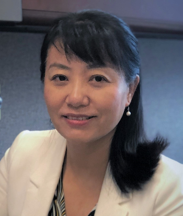 Rose Qingyang Hu [M’98, SM’06, F’20] is a Professor of Electrical and Computer Engineering Department and Associate Dean for Research of College of Engineering at Utah State University. Besides more than 15 years’ academia research experience, Dr. Rose Hu has more than a decade industrial research and development experience with Nortel, Blackberry, and Intel, working on industrial 3G and 4G research, technology development, and 3GPP/IEEE standardization. Dr. Rose Hu's current research interests cover next-generation wireless communications and networks, the Internet of Things, cyber-physical systems, as well as artificial intelligence and machine learning in wireless networks. She has made significant contributions to her field, with a portfolio that includes the publication of 6 books, 4 book chapters, over 320 papers in leading IEEE journals and conferences, and 29 patents. She is an IEEE Fellow, a NIST Communication Technology Laboratory Innovator 2020, an IEEE Communications Society (ComSoc) Distinguished Lecturer, an IEEE Vehicular Technology Society Distinguished Lecturer. Dr. Hu received 2023 IEEE WICE Outstanding Achievement Award and has co-authored papers that received four IEEE Best Paper Awards from IEEE Globecom 2012, IEEE ICC 2015 and 2016, and IEEE VTC 2016. She has served on the Editorial Boards of 8 journals and guest-edited numerous special issues in the cutting-edge communications and networking areas. She has also been actively involved in organizing numerous IEEE International Conferences, Symposia, and Workshops. This includes her role as TPC Co-Chair for IEEE Globecom 2023 and ICC 2018. Dr. Hu has also served in the ComSoc Board of Governors as Chief Information Officer. Currently, she is the Director for the ComSoc Educational Services Board, Vice Chair for the ComSoc GLOBECOM / ICC Management & Strategy (GIMS) Standing Committee, and a Board of Director member for the American Society of Engineering Education (ASEE) Engineering Research Council.
Rose Qingyang Hu [M’98, SM’06, F’20] is a Professor of Electrical and Computer Engineering Department and Associate Dean for Research of College of Engineering at Utah State University. Besides more than 15 years’ academia research experience, Dr. Rose Hu has more than a decade industrial research and development experience with Nortel, Blackberry, and Intel, working on industrial 3G and 4G research, technology development, and 3GPP/IEEE standardization. Dr. Rose Hu's current research interests cover next-generation wireless communications and networks, the Internet of Things, cyber-physical systems, as well as artificial intelligence and machine learning in wireless networks. She has made significant contributions to her field, with a portfolio that includes the publication of 6 books, 4 book chapters, over 320 papers in leading IEEE journals and conferences, and 29 patents. She is an IEEE Fellow, a NIST Communication Technology Laboratory Innovator 2020, an IEEE Communications Society (ComSoc) Distinguished Lecturer, an IEEE Vehicular Technology Society Distinguished Lecturer. Dr. Hu received 2023 IEEE WICE Outstanding Achievement Award and has co-authored papers that received four IEEE Best Paper Awards from IEEE Globecom 2012, IEEE ICC 2015 and 2016, and IEEE VTC 2016. She has served on the Editorial Boards of 8 journals and guest-edited numerous special issues in the cutting-edge communications and networking areas. She has also been actively involved in organizing numerous IEEE International Conferences, Symposia, and Workshops. This includes her role as TPC Co-Chair for IEEE Globecom 2023 and ICC 2018. Dr. Hu has also served in the ComSoc Board of Governors as Chief Information Officer. Currently, she is the Director for the ComSoc Educational Services Board, Vice Chair for the ComSoc GLOBECOM / ICC Management & Strategy (GIMS) Standing Committee, and a Board of Director member for the American Society of Engineering Education (ASEE) Engineering Research Council.



